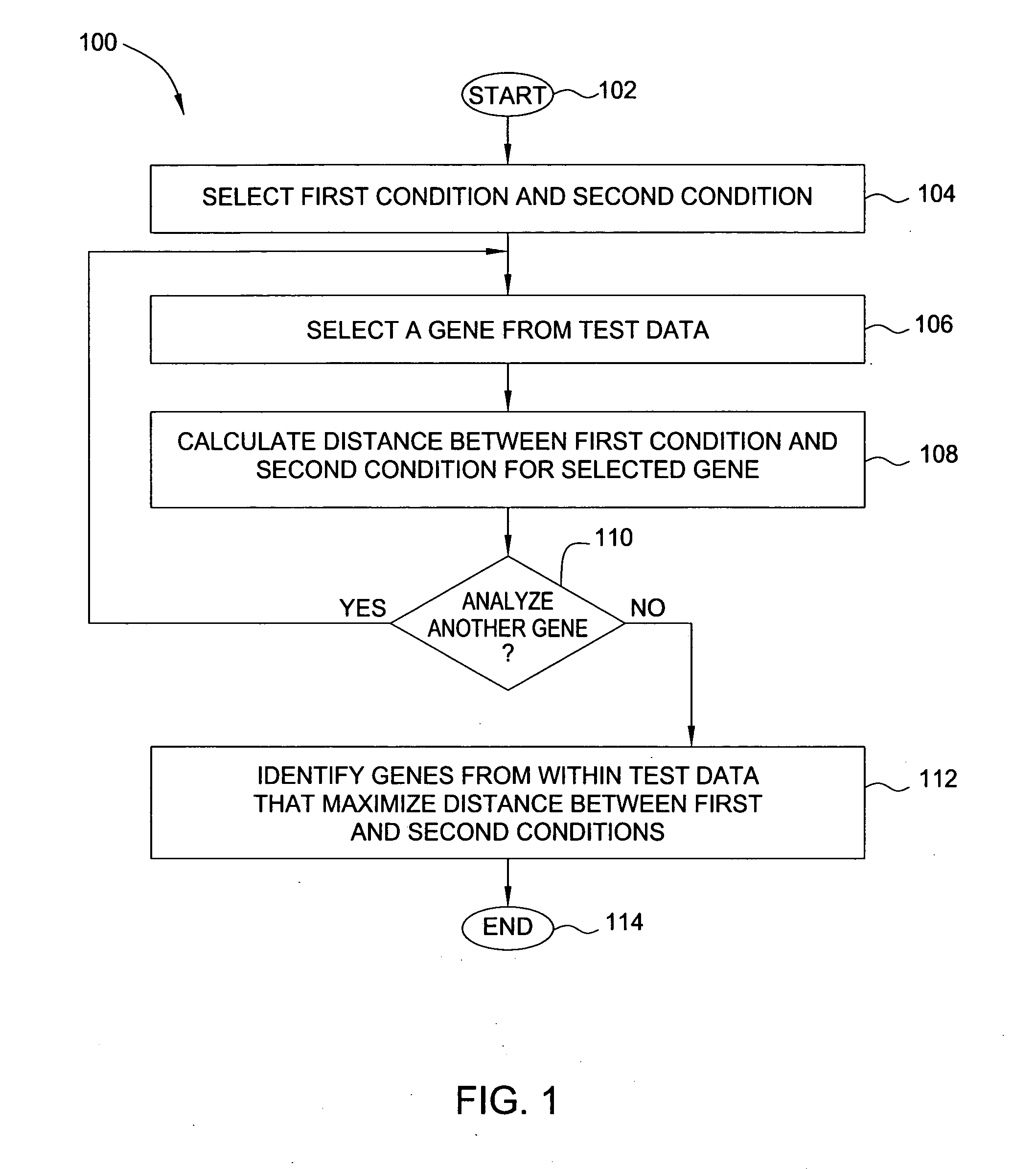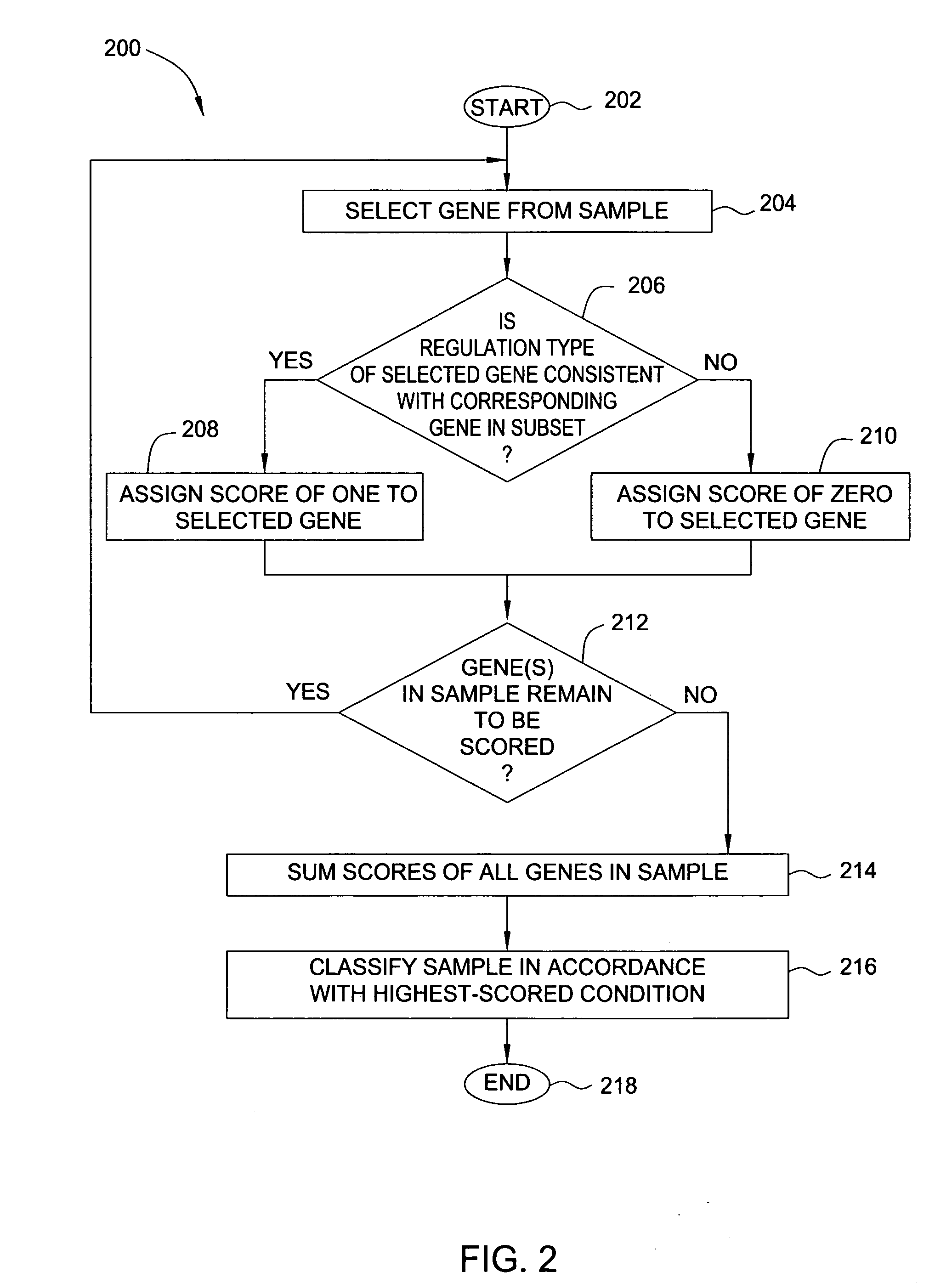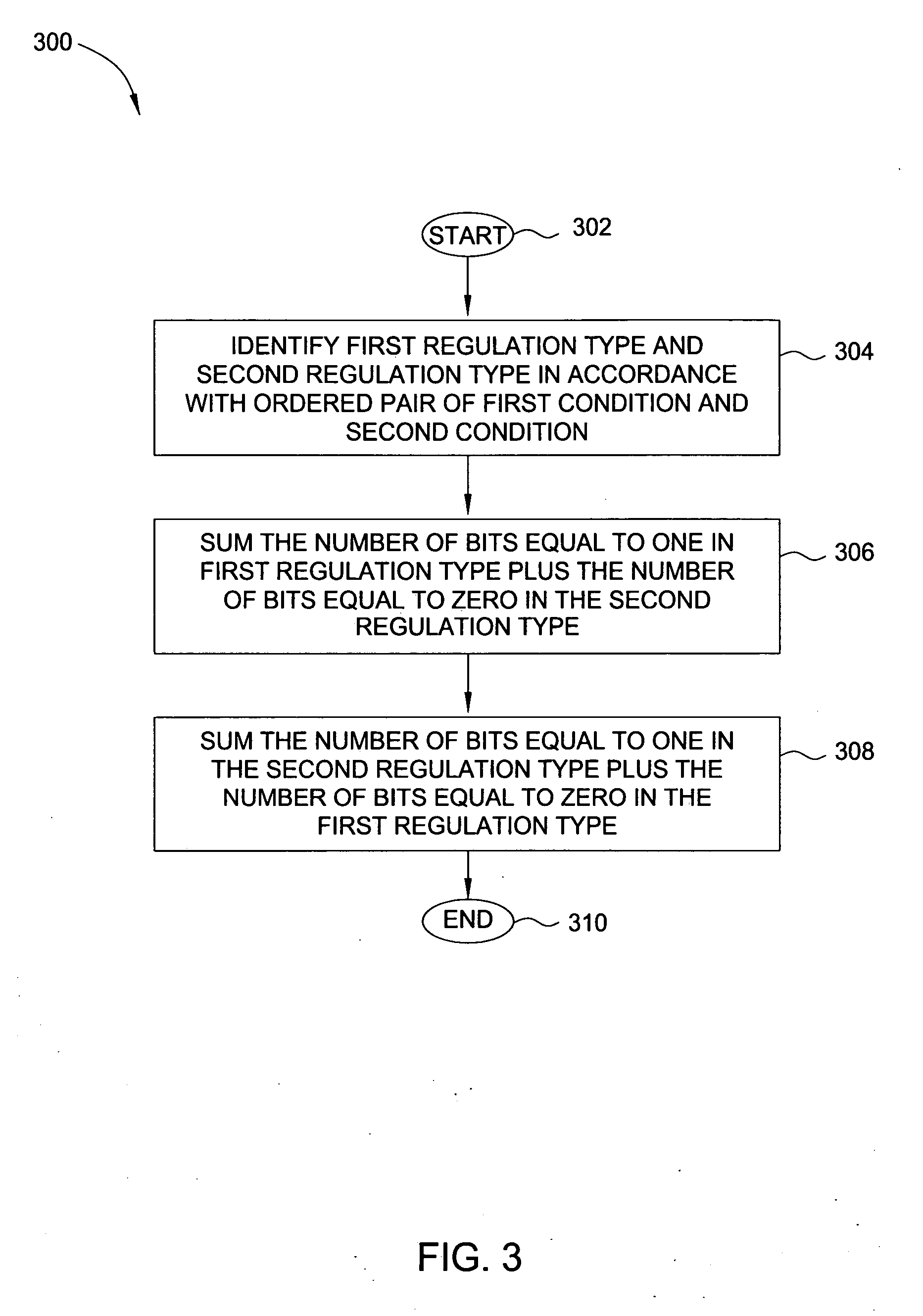Method and apparatus for classifying nucleic acid responses to infectious agents
a technology of nucleic acid and infectious agents, applied in the field of health services, can solve the problems of impracticality of monitoring the expression level of all genes in an immune system cell, subset of genes that will produce the most meaningful, etc., and achieve the effect of maximizing the distance between each pair of conditions and minimizing the probability of diagnosis
- Summary
- Abstract
- Description
- Claims
- Application Information
AI Technical Summary
Benefits of technology
Problems solved by technology
Method used
Image
Examples
Embodiment Construction
[0014] In one embodiment, the present invention relates to the classification of nucleic acid responses to infectious agents. Embodiments of the invention optimize the selection of a subset of genes (e.g., from a set of all genes within a human immune system cell) for gene expression analysis, where the ultimate goal of the analysis may be to identify a prevailing condition in a sample of an individual's blood. Probing only the genes in this reduced subset will allow diagnostic tests to be performed in a relatively inexpensive and timely manner, while maintaining the ability to reliably differentiate between different exposure conditions.
[0015] Within the context of the present invention, a “condition” is defined as at least an infectious agent (e.g., a biowarfare agent, a virus, an allergen, etc.) to which an individual has been exposed. In some embodiments, the condition additionally identifies the length of time since the individual was exposed to the infectious agent. Thus, for...
PUM
| Property | Measurement | Unit |
|---|---|---|
| Distance | aaaaa | aaaaa |
Abstract
Description
Claims
Application Information
 Login to View More
Login to View More - R&D
- Intellectual Property
- Life Sciences
- Materials
- Tech Scout
- Unparalleled Data Quality
- Higher Quality Content
- 60% Fewer Hallucinations
Browse by: Latest US Patents, China's latest patents, Technical Efficacy Thesaurus, Application Domain, Technology Topic, Popular Technical Reports.
© 2025 PatSnap. All rights reserved.Legal|Privacy policy|Modern Slavery Act Transparency Statement|Sitemap|About US| Contact US: help@patsnap.com



